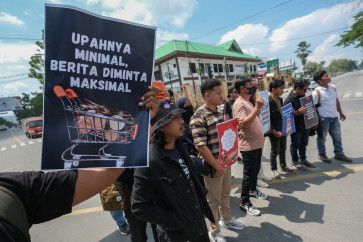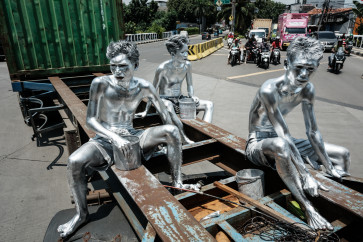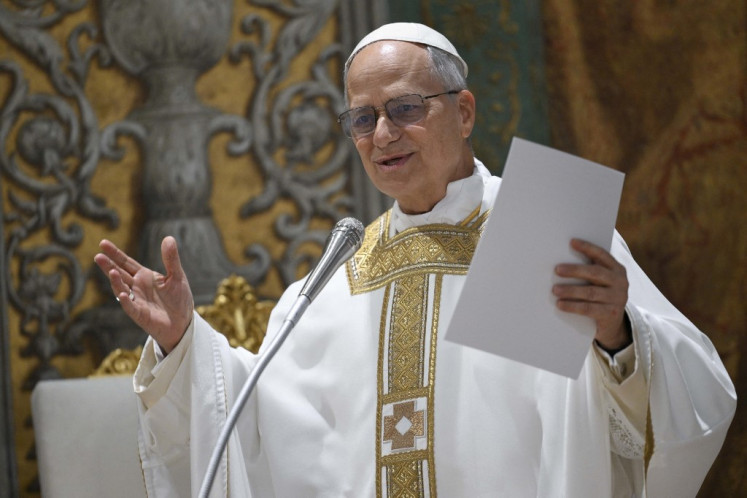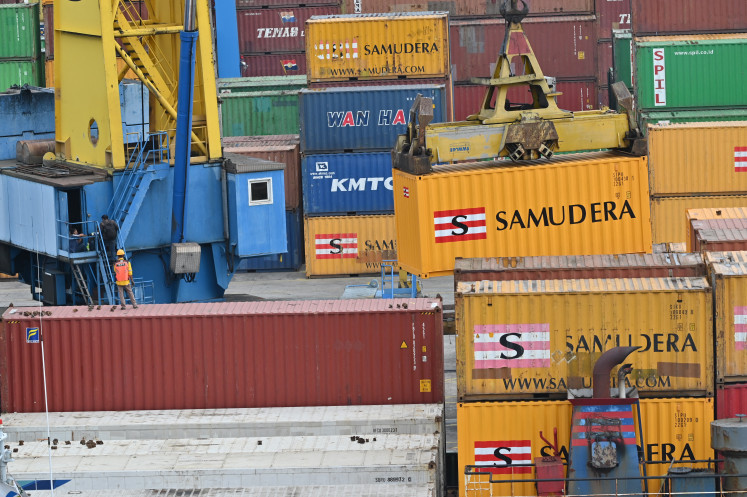Explainer: Learning loss prompts government to introduce Merdeka curriculum
As Indonesia reels from learning loss, the government is giving schools the option to choose a curriculum for the new academic year, including the much-vaunted Merdeka curriculum.
Change text size
Gift Premium Articles
to Anyone
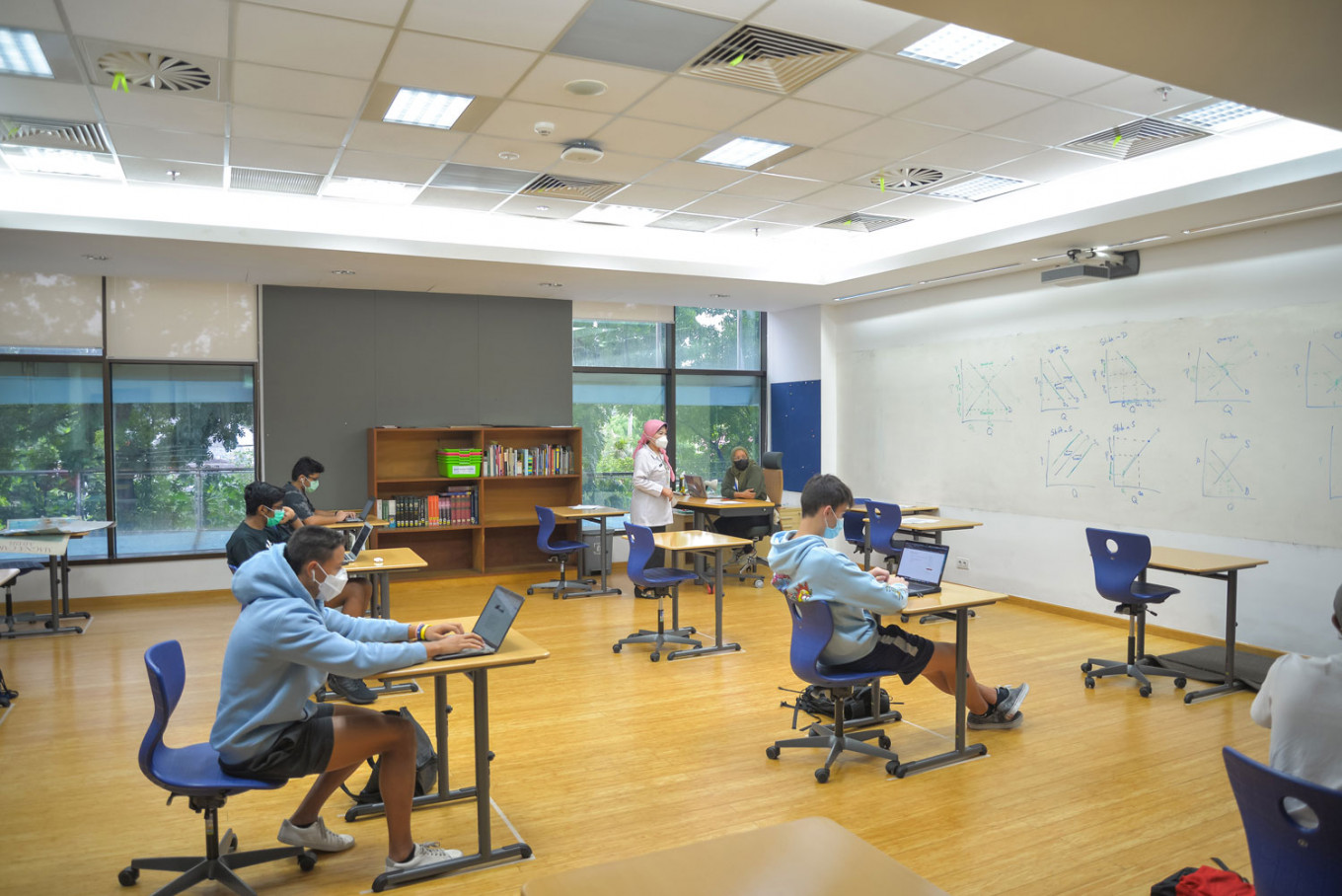
T
he government has recently introduced a new curriculum option to modernize Indonesia’s education system, dubbed the Merdeka (Freedom) curriculum, it will be applicable from this year for early childhood education institutions all the way up to senior high schools (SMA).
It has been touted as the answer to the nationwide trend of learning loss – the loss of knowledge and skills that students experience when they are not in school.
Authorities believe the COVID-19 pandemic has greatly exacerbated this problem. Since schools were forced to shutter soon after Indonesia reported its first infection in March 2020, teachers and students alike have struggled with the sudden transition to distance education.
Despite a constitutional mandate of allocating 20 percent of the state budget for education, longstanding obstacles to online learning, such as unequal access to the internet and devices, as well low levels of digital literacy among teachers, have continued to rear their heads time and time again.
A survey by the Education, Culture, Research and Technology Ministry, which polled some 3,300 students in April 2020, showed that the pandemic had resulted in an estimated setback of six months for acquiring literacy skills and five months for numeracy skills.
“These numbers are just an average; we can only imagine that schools in more remote areas must have a learning loss of eight to 10 months. This is a very significant setback,” said Minister Nadiem Makarim at the kickoff event for Indonesia’s Group of 20 (G20) activities in education, on Feb. 11.
A World Bank study published last year revealed that students worldwide could experience between 0.9 and 1.2 years of learning loss from the one-and-a-half-year school closures, which could cost each student US$408 to $578 (Rp5.8 million to Rp8.3 million) in future annual earnings.
This fear of learning loss has led the government to insist on reopening schools and resuming face-to-face learning, in spite of the challenges that the pandemic still poses.
What does the Merdeka curriculum offer?
The Merdeka curriculum was formed to counter learning loss, Nadiem said. He believes the existing problem can be attributed, at least in part, to the fact that previous curricula were deemed “too full of content”.
“There is proof the density of materials that we always put in our curriculum has had no positive impact [on learning outcomes]. In fact, the more concise or simpler, the better,” he argued.
To this end, the new curriculum was made to offer more flexibility in learning structures, in addition to focusing on only the most essential learning materials for students.
When does the new curriculum come into effect?
For what started off as a prototype not planned for so soon a launch, the Merdeka curriculum has already been trialed by some 2,500 handpicked schools. These schools, dubbed sekolah penggerak (activator schools), began implementing the curriculum last year.
But with growing urgency to curb the effects of learning loss on Indonesia’s wider student population, schools are now given the option to implement one of three curricula for the upcoming academic year: the tried-and-tested 2013 curriculum, the emergency curriculum, which simplifies the 2013 iteration or the Merdeka curriculum.
“The government will prepare a questionnaire to help education units assess how prepared they are to implement the Merdeka curriculum. There won’t be any mandatory requirement [to use the curriculum] for the next two years,” Nadiem explained.
Nadiem’s office is also seeking to consolidate provisions under the 2003 National Education System (Sisdiknas) Law, the 2005 Teachers and Lecturers Law and the 2012 Higher Education Law, despite some opposition.
What is different in the new curriculum?
Unlike regimented classes under the 2013 curriculum, which set out a certain amount of learning hours per week for each subject, the Merdeka curriculum sets out annual targets, in effect giving schools the freedom to structure their teaching programs and learning timetables.
The new curriculum no longer requires students to choose between majoring in sciences (IPA) or social studies (IPS), which has long been considered a hallmark of Indonesia’s secondary education system. Instead, students would be allowed to choose their preferred subjects.
Another difference between the 2013 curriculum and the Merdeka curriculum is that the latter places emphasis on project-based learning, geared toward developing students’ soft skills and building character.
“This is the most important element, not only for their education, but for [honing their skills for] a knowledge economy and a digital revolution, so they can collaborate, use creativity and analytical thinking,” the minister said.
How do educators prepare for this curriculum?
Keeping to his roots as the tech-savvy cofounder and former CEO of Indonesian superapp Gojek, Nadiem has also launched the government’s first education mobile application, called Merdeka Mengajar (Freedom to Teach), geared for teachers seeking to improve on pedagogical skills so they can put the new curriculum into practice.
As an online content learning platform, the app provides thousands of references for learning materials and learning modules, while also allowing teachers themselves to upload their own materials as a reference for others.
“This will help teachers conduct literacy and numeracy diagnostics analysis quickly, so they can teach at the level corresponding to the students’ stage of development,” he explained.
For teachers who have difficulties accessing the internet, the government will provide them with USB sticks containing all the necessary training modules.


